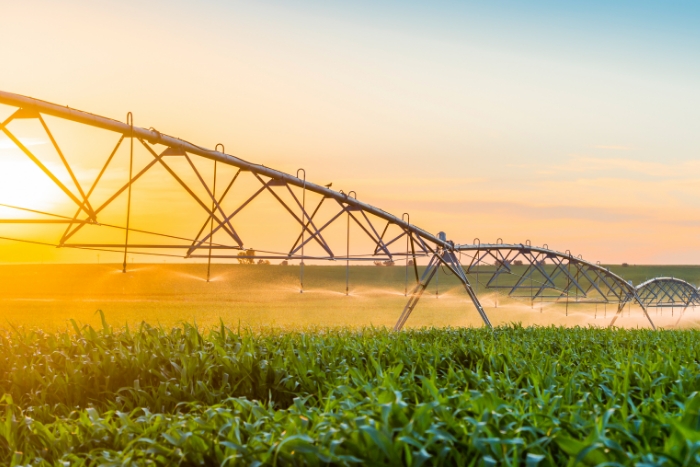
Irrigation technology has transformed commercial agriculture by enabling farmers to grow crops more reliably, particularly in regions prone to drought and unpredictable rainfall. Over the past century, irrigation systems have become essential tools for enhancing agricultural productivity and ensuring food security.
One significant advancement in irrigation technology occurred in the early 1950s, with the development of the center-pivot irrigation system in Nebraska. This innovation quickly became the dominant method across the High Plains and soon spread to various agricultural regions, both nationally and globally. Its rapid adoption in the ’60s and ’70s was driven by dependable returns on investment in drought-prone areas, where seemingly abundant groundwater and a favorable regulatory environment created ideal conditions for its success.
[T]he ability to extract large volumes of groundwater has led to significantndeclines in water levels, raising concerns about the long-term sustainability of both water resources and agricultural productivity.
Irrigation systems have enabled farmers to increase crop yields, profitability and land value. However, the ability to extract large volumes of groundwater has led to significant declines in water levels, raising concerns about the long-term sustainability of both water resources and agricultural productivity. In response, advancements in irrigation technology have emerged rapidly. Today, a variety of precision irrigation tools offer farmers the opportunity to reduce water usage by delivering only the precise amount of water that crops need based on factors such as topography, hydrology and soil characteristics. These innovations include improved sprinkler systems, such as center pivots utilizing precision technology equipment, commonly used to irrigate crops like corn, soybeans and alfalfa, as well as microirrigation methods like drip systems, often used in vineyards and orchards. For instance, variable-rate irrigation systems enable farmers to adjust pressure and speed at individual sprinkler nozzles, reducing energy costs and labor expenses.
Despite the benefits, adoption rates of advanced irrigation systems remain quite low. First, the systems are expensive and require both a significant upfront investment and time to learn how to operate and maintain them. Many farmers are reluctant to take on additional loans for complex systems that may not integrate well with existing infrastructure or that potentially present technical risks, such as faulty sensors, system failures and lack of accessible support. In addition, uncertainty about how these technologies will impact yields — especially as unpredictable weather patterns become more common — adds to the hesitation. Finally, in regions where water shortage is not an immediate concern, the incentive to invest in such technologies is especially low. The perceived urgency for water conservation is minimal, and in the face of an abrupt drought, using traditional irrigation methods may present a safer option.
The challenges surrounding the adoption of advanced irrigation technologies highlight the need for accessible, locally adapted solutions and strong support to promote change and enhance water stewardship. This complex issue involves many factors, including the role of local water policies, that were not discussed in this article. Collaboration among farmers, policymakers, technology developers and researchers with a focus on better understanding “how to meet farmers where they are” will continue to be key in designing practical solutions. For example, programs like TAPS and Master Irrigator, which encourage peer-to-peer learning and allow farmers to test new technologies without financial risk, will continue to play a vital role. By building trust, bridging generational divides and tailoring approaches to local contexts, advancements in irrigated agriculture can become more effective.
8280 Willow Oaks Corporate Drive | Suite 630 | Fairfax, VA 22031
Tel: 703.536.7080 | Fax: 703.536.7019
HOME | ABOUT US | ADVERTISE | SUBSCRIBE | CONTACT | PRIVACY POLICY | IA ANTITRUST STATEMENT